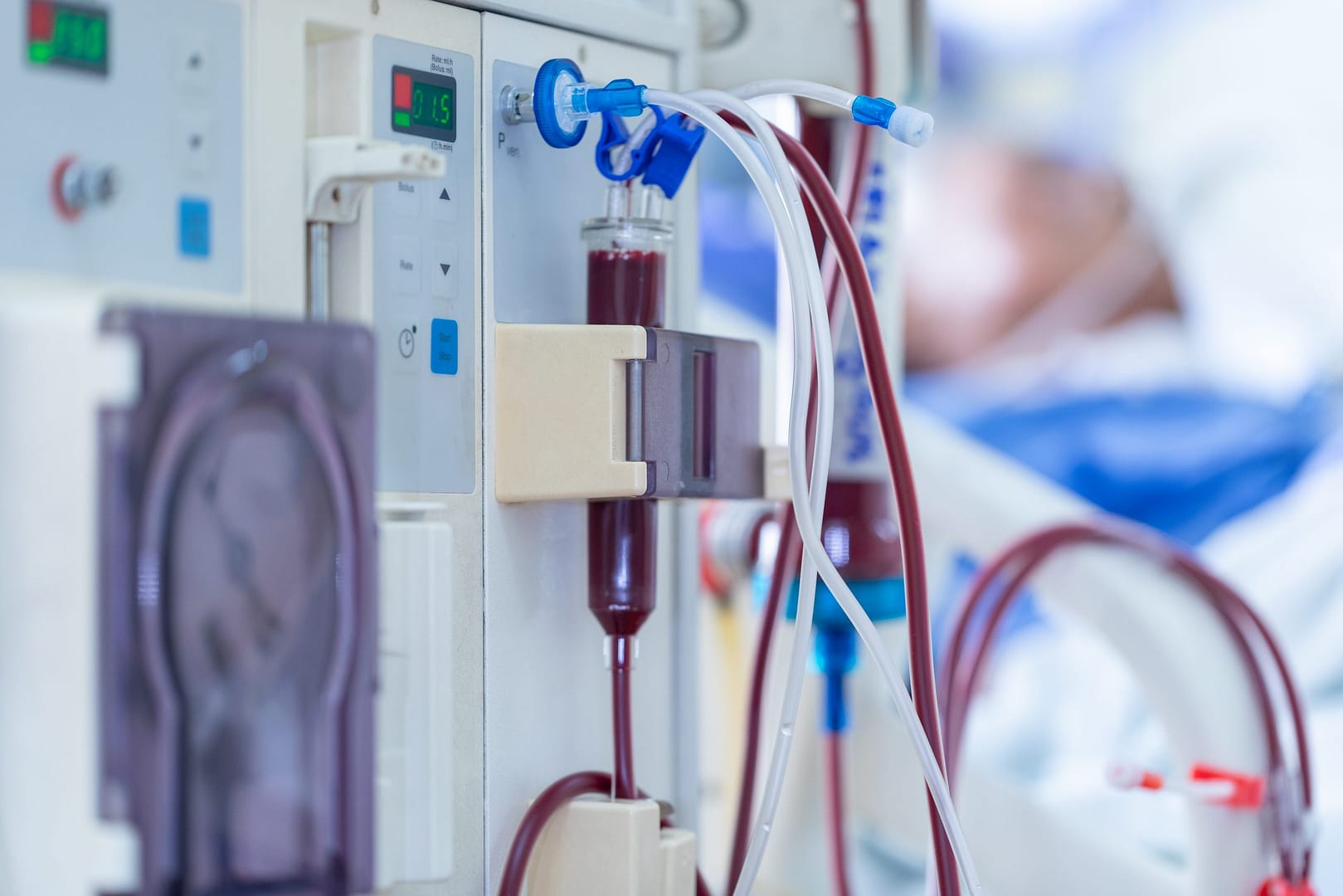The kidneys are vital to maintaining the normal functions of the body. They work in multiple ways, which range from removing waste products (toxins and excess fluids) to maintaining the normal levels of electrolytes. As a person develops kidney failure, they no longer have the ability to perform these functions and this leads to a buildup of toxins, fluids, and abnormal electrolyte levels. If not treated in a timely manner, these abnormal levels can become life-threatening. Dialysis is designed to replace the natural ability of kidneys, which is why it is commonly referred to as “renal replacement therapy.”
Dialysis is a medical treatment that uses a special fluid (dialysate) and a filter (semi-permeable membrane) to carefully remove excess toxins, wastes, fluid, and electrolytes from the body. The dialysate is a custom-designed fluid, made with specific concentrations of chemicals and electrolytes in pure water, that is used throughout dialysis. The semipermeable membrane is a specially designed filter with different sized pores (holes). These pores allow excess wastes and electrolytes to pass from your blood, through the filter, and into the dialysate. However, larger substances, such as proteins and red blood cells, are blocked by the filter and kept in the body. Once the dialysate has collected the excess wastes, toxins, and fluid, this “dirty dialysate” is discarded, leaving “clean” blood to be returned back into the body.
Dialysis works through the processes of diffusion and ultrafiltration. Diffusion is a natural property of substances, which allows them to move from areas of high concentrations to areas of low concentrations. Through diffusion, dialysis is able to transfer excess wastes and toxins from your blood (area of high concentration) and into the dialysate (area of low concentration). Ultrafiltration is a process that uses pressure and concentration gradients to separate water from substances. It is used to remove excess water from the body during dialysis.
There are two types of dialysis, hemodialysis and peritoneal dialysis. Hemodialysis cleans the blood through a dialysis machine, which uses an artificial filter known as a hemodialyzer. You are connected to the dialysis machine through a hemodialysis access, which allows your blood to flow into the machine for filtering and then be returned back to your body. Hemodialysis can be done in a dialysis center (In-center HD) and at home (Home HD). In-center HD is usually done three times per week at a dialysis center. Home HD is done slower, which requires it to be done more often, but can be done in the comfort of your own home. Peritoneal dialysis uses your peritoneum (the lining of your abdomen) as a natural filter for dialysis. A peritoneal dialysis catheter is used to infuse clean dialysate into your abdomen and remove dirty dialysate once it has collected excess wastes, toxins, and fluids.
As a replacement for kidney function, dialysis can be used temporarily in the setting of kidney injury or for someone awaiting a kidney transplant. Dialysis can also be used permanently for people who are not eligible for kidney transplant.
Contact Us
At The Kidney and Hypertension Center, we provide consultation and ongoing care for the prevention and treatment of kidney-related diseases. Schedule your appointment today.


